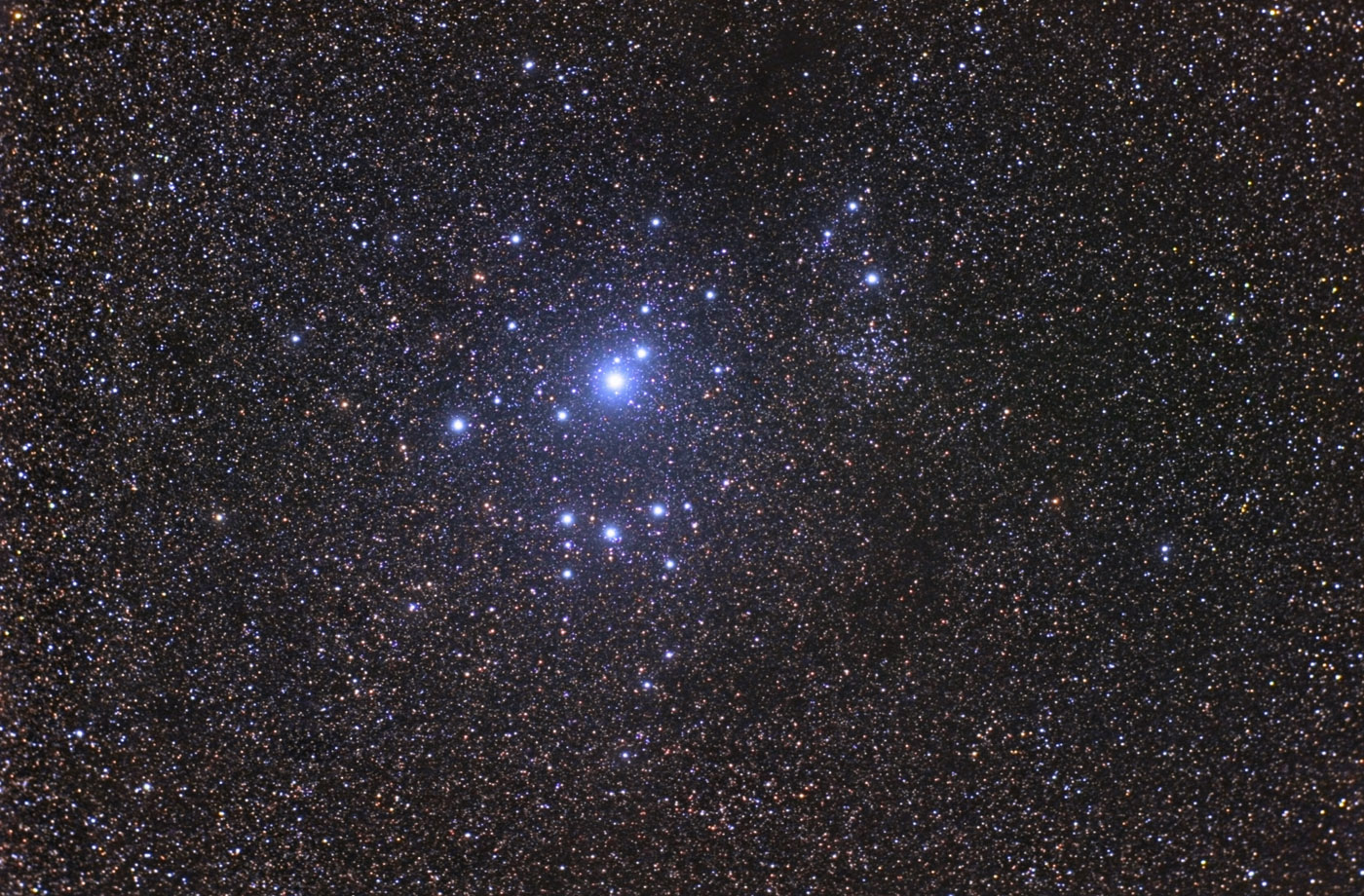
| HOME |
IC 2602 & MEL 101- OPEN CLUSTERS
CARINA
(Image Centred at: ra 10.43/ dec -64:19)

-December 2009, Mercedes Observatory Buenos Aires, Argentina
AAAA - Star Party
DATA
TYPE: Open Cluster
Magnitude IC 2602: 1.9 / Magnitude Mel 101: 8
Apparent Diameter: IC 2602 approximately 50 arc minutes / Mel 101: 14 arc minutes
DISTANCE: 479 lights years
IMAGE INFORMATION
SCOPE: William Optics Zenithstar 66 with WO 0.8 x fr/ff
CAMERA: Canon 20Da
GUIDING: Celestron C8 SCT working at f5.1
IMAGE ACQUISITION: Images Plus - Guiding AstroArt 3.0 - Control Interface 3.72 plug in
FILTERS: None
SKY CONDITIONS: rural skies - transparency and seeing good
EXPOSURES: 12 x 5 minutes
PROCESSING: Calibration (Sigma Median) done Images Plus. No darks no flats no bias used. CCD Sharp, Photoshop CS2
OBJECT DESCRIPTION AND IMAGE SESSION
Visible at naked eye even from urban skies IC 2602 is also known as the Southern Pleiades cluster. It does not present the type of M45's nebulosity, but indeed there is a reflection glow coming from the main star. I have not manipulated any data in order show what the camera had captured as real as possible. Visually it is best seen with binoculars and it is a really beauty. Its main star Theta Carinae is a third magnitude star. All the other are fifth magnitude and fainter. Its companion Mel 101, is clearly noticed at the center right of Theta Carina
IC 2602 was discovered by French astronomer Abbe Louis Lacalle in 1751 from South Africa.
Same as Orion Sword, this was the first time trying Images Plus focus routine. Unfortunately by mistake the images were acquired in the lowest JPG resolution which is about 1.9 mega pixels.